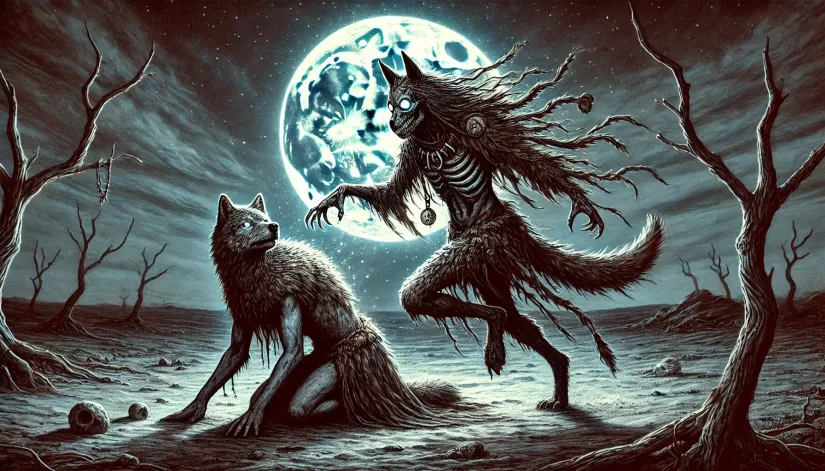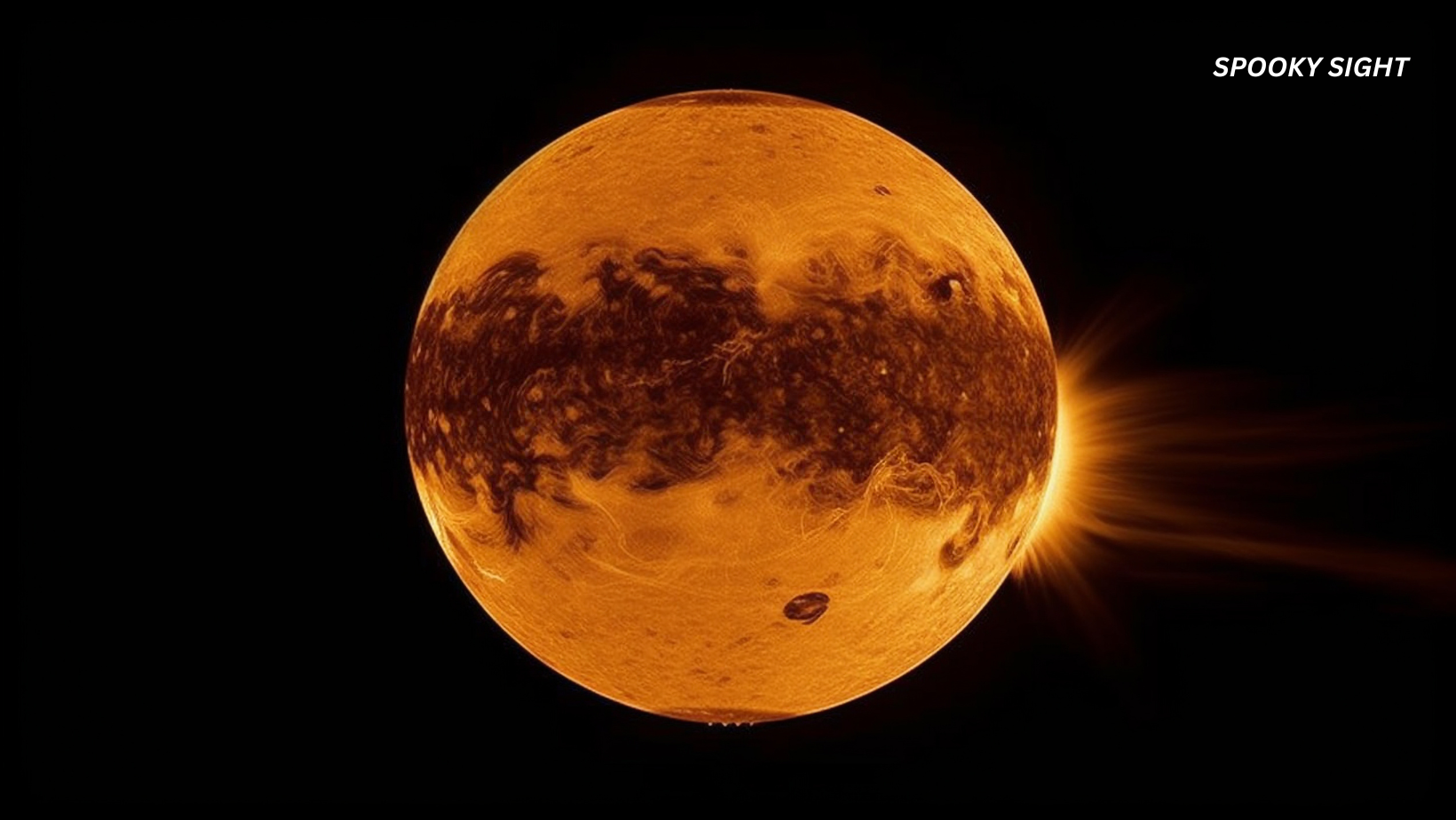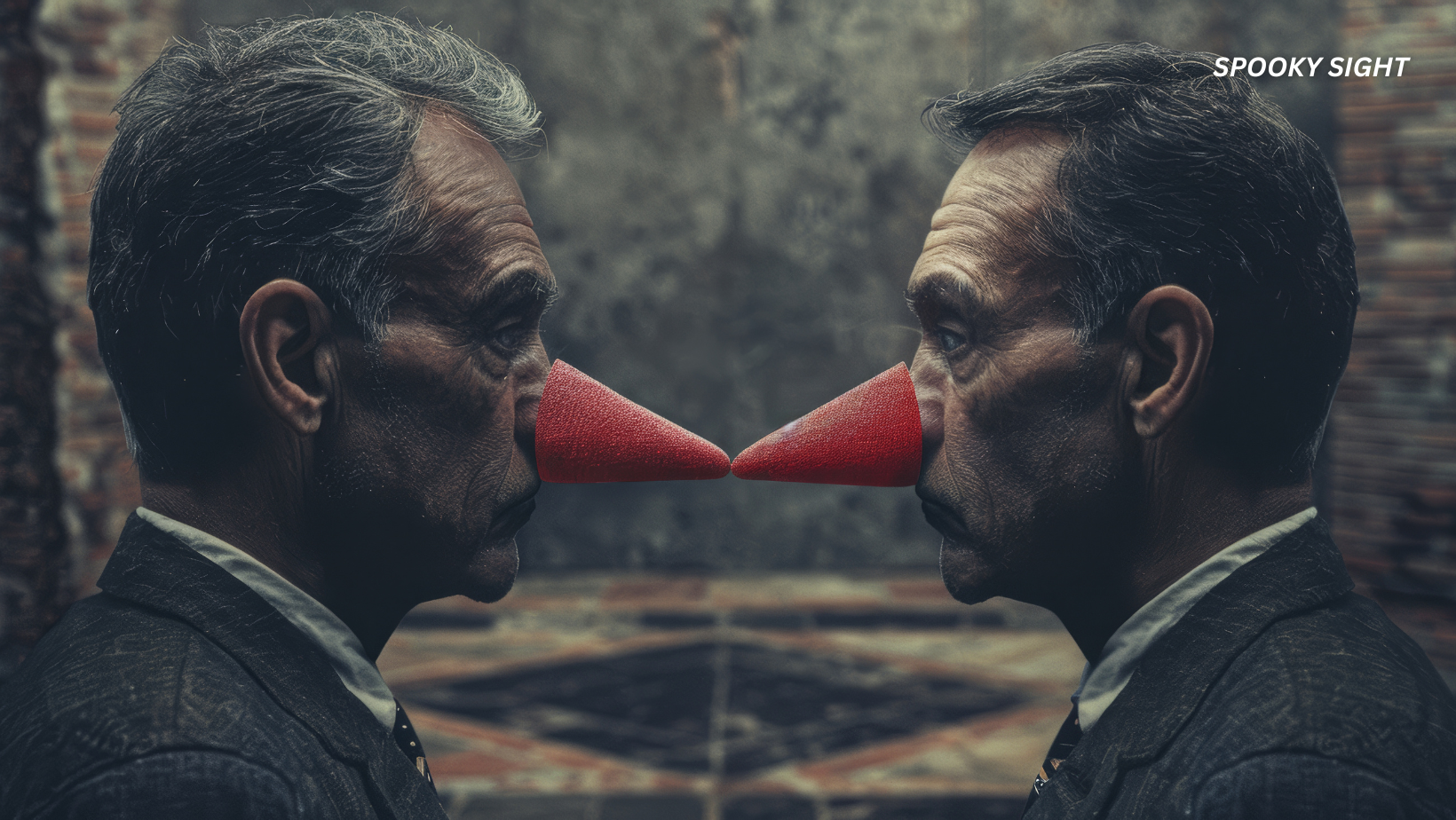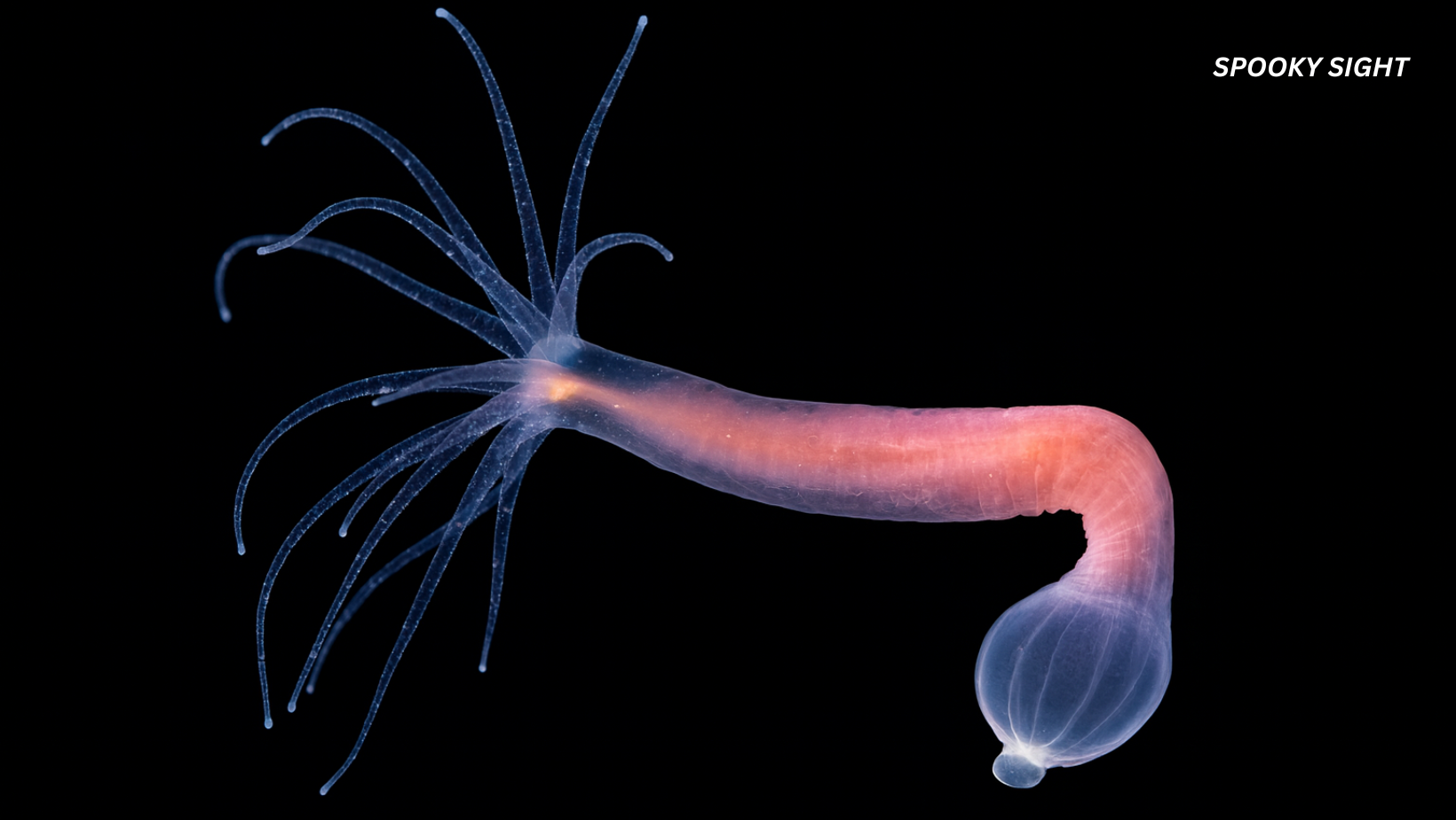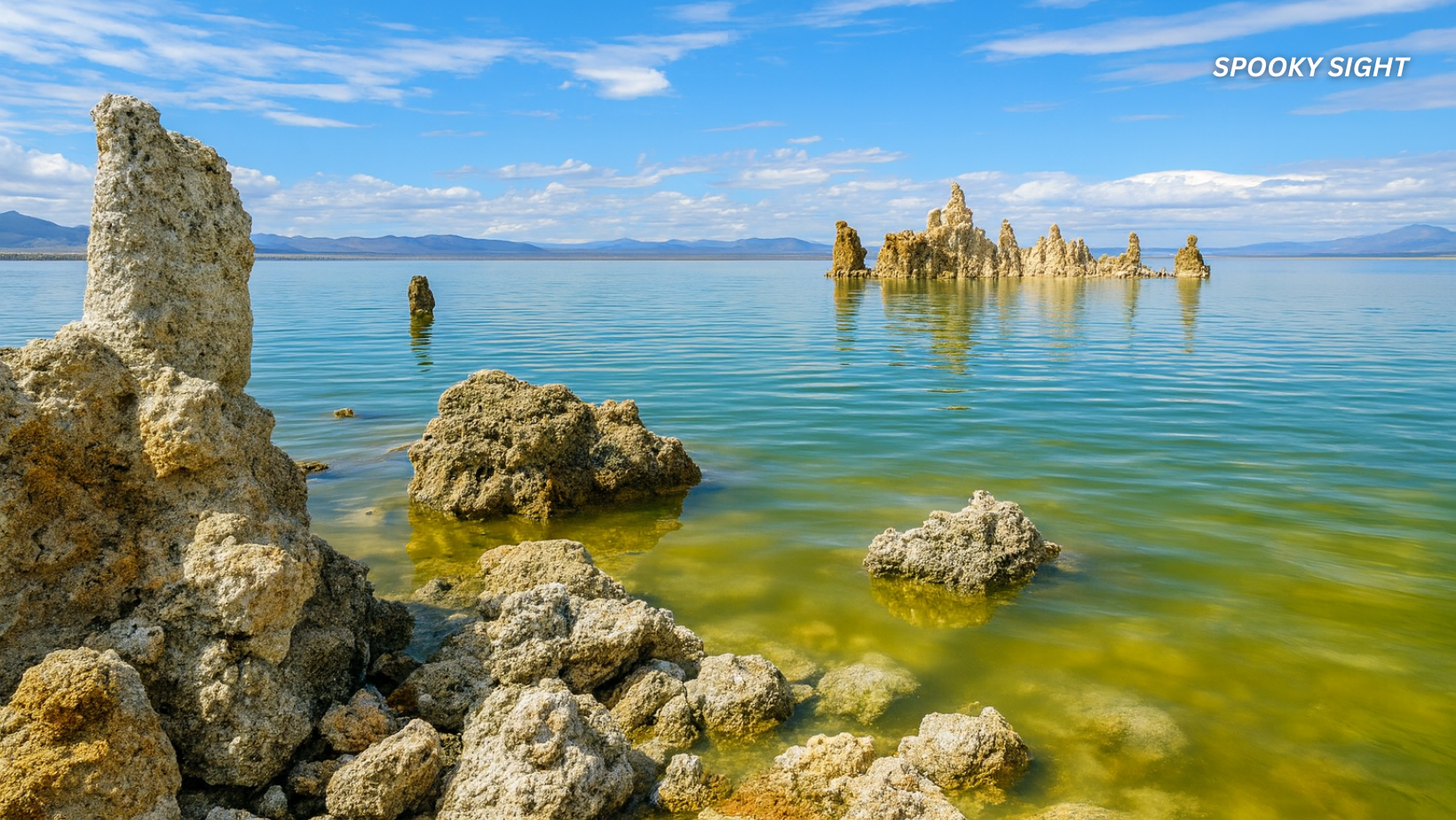Cryptids, mythical creatures, and monsters are a common theme in the folklore of cultures worldwide, from the Sphinx of ancient Egypt to the dragons of China and the mighty Minotaur of ancient Greece.
Native American cryptids make no exception. Their stories are equally fascinating and terrifying.
According to Sam D. Gill and Irene F. Sullivan, in their book “Dictionary of Native American Mythology,” mythology and rituals are the heart and lifeblood of every Native American culture. They serve as a means of transmitting history, values, hopes, and dreams.
In this article, we will discover 11 of the most intriguing and well-known Native American cryptids.
In this article:
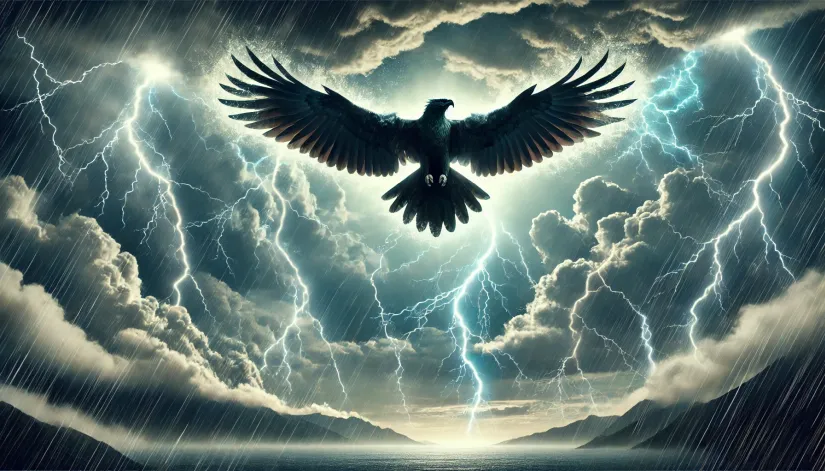
Thunderbird: The Majestic Sky Creature
Among the most fascinating and revered Native American cryptids, the Thunderbird is a majestic and powerful entity.
Depicted as a colossal bird with wingspans reaching extraordinary lengths, the Thunderbird occupies a special place in the mythologies of various indigenous tribes.
The Thunderbird’s origins can be traced back to the ancient beliefs of tribes such as the Ojibwe, Ho-Chunk, and Kwakwaka’wakw.
These tribes regard the Thunderbird as a sacred guardian of the skies, closely associated with thunder, lightning, and storms. According to legend, its mighty wings create thunderclaps, and its piercing eyes shoot lightning bolts across the heavens.
The Thunderbird is said to summon storms and even carry off whales and other large prey. Its feathers were believed to possess mystical properties, with warriors seeking them for protection and strength in battle.
One of the most notable historical accounts dates back to 1890. The Tombstone Epitaph, a newspaper in Tombstone, Arizona, reported a sighting of a gigantic bird-like creature that resembled the legendary Thunderbird.
Ranchers in the region claimed the creature had a wingspan of approximately 160 feet, causing a sensation in the local community.
More recently, there have been reports of Thunderbird sightings that continue to intrigue and captivate.
In 2002, near Lawndale, Illinois, two individuals reported encountering an enormous bird-like creature with a wingspan estimated to be over 10 feet.
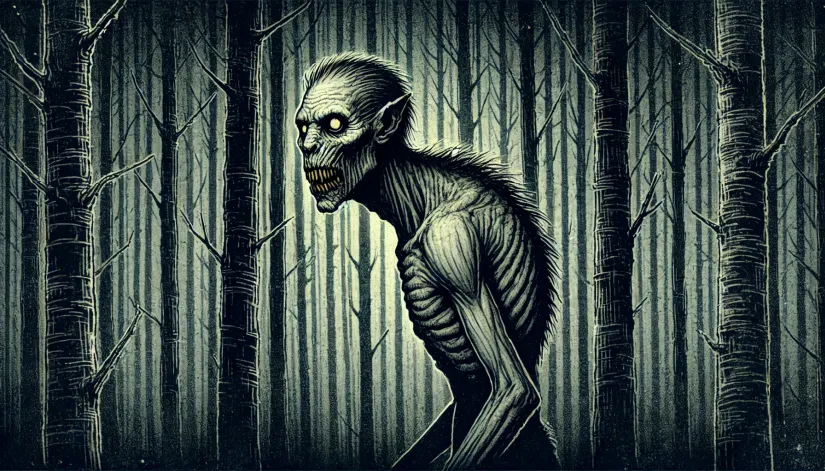
Wendigo: A Truly Terrifying Native American Cryptid
Wendigo, originating from the folklore of Algonquian-speaking tribes like the Ojibwe, Cree, and Innu, is one chilling Native American cryptid you wouldn’t want to encounter.
This malevolent spirit is deeply tied to themes of cannibalism and the harshness of the winter wilderness, making it a symbol of both human and environmental extremes.
Described as gaunt and tall, the Wendigo is often depicted with sunken eyes, yellowed fangs, and emaciated yet powerful limbs. Its hunger for human flesh is unending—a bottomless pit that drives its insatiable appetite.
But what truly sets the Wendigo apart from other Native American cryptids is its ability to mimic human voices. It lures unsuspecting victims deeper into the wilderness, where it can strike.
Legends typically center around individuals overtaken by greed or driven to cannibalism during desperate times.
These unfortunate souls transform into Wendigos themselves, becoming monstrous beings haunted by an unquenchable hunger and a relentless desire for more victims.
Related: Is the Lizard Man of Scape Ore Swamp Real? Evidence and Sightings
Psychologically, the Wendigo legend is fascinating. Wendigo psychosis is a term used to describe a condition where individuals, often under extreme duress, develop an intense craving for human flesh, leading them to believe they are becoming a Wendigo.
Interestingly, reports of Wendigo sightings have emerged sporadically over the years, primarily in the northern United States and Canada.
One of the most notorious cases involves Swift Runner, a Native American man who, in 1879, murdered and ate his family. He claimed to be possessed by a Wendigo spirit at the time but was nonetheless executed for his crimes .
So, what do you think? Could this Native American cryptid lurk out there, waiting for its next victim?
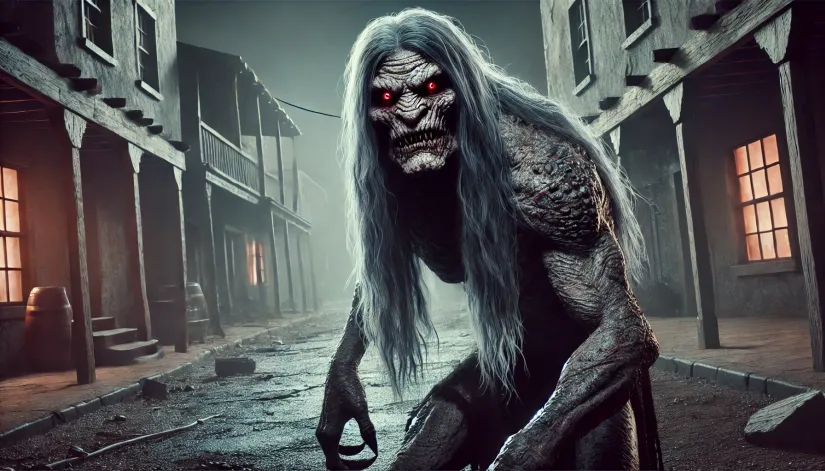
Átahsaia: The Terrifying Cannibal Demon of Zuni Mythology
Do you think that the Wendigo is the worst Native American cryptid? Not even close.
The Zuni people of the Southwest have some pretty wild stories, too. One of the creepiest is about Átahsaia, the “cannibal demon.”
This guy is described as a huge, monstrous figure with thick, knobby skin, long gray hair, and a muscular, scaly body. To top it off, he’s got these piercing red eyes that can send chills down your spine.
Átahsaia is famous (or infamous) in Zuni tales for his gruesome acts— especially when it comes to snatching and eating young women.
Related:
- What is the Marozi, Kenya’s Legendary Spotted Lion?
- Impundulu: The Lightning Bird African Cryptid That Will Shock You
- Is the Grootslang Real? Discover The Legendary Beast of Africa
One of the more popular stories involves him tricking two sisters into his cave and trying to get them to eat a soup made from the flesh of kidnapped children. Yikes, right?
Luckily, the twin war gods—Áhaiyúta and Mátsailéma—jumped in to save the day, taking down Átahsaia and rescuing the girls.
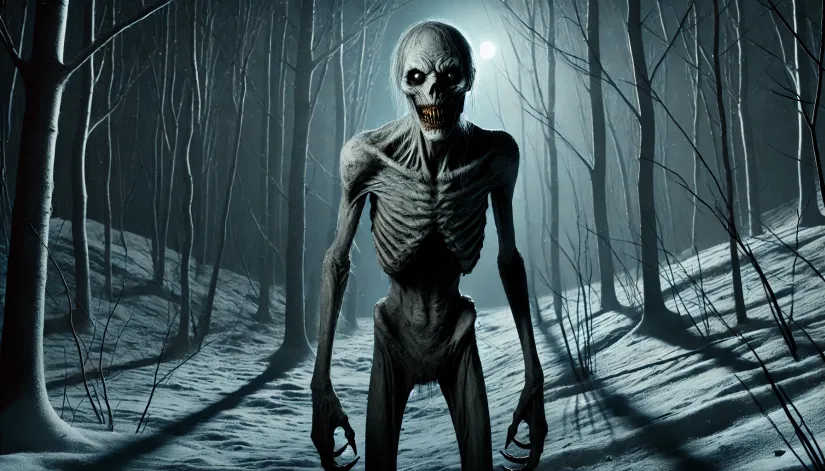
Skinwalker: The Shapeshifting Beast
In Navajo (Diné) mythology, stories abound about a terrifying creature known as the Skinwalker—a witch who can allegedly transform into any animal or human it desires.
According to legend, this strange Native American cryptid must wear the pelt or hide of the creature it wishes to imitate. However, some tales suggest it might use human hair or fingernail clippings for its transformations.
These witches are known for their dark rituals, often involving grave-robbing to obtain corpse powder, which they use to poison their victims.
Skinwalkers (also known as yee naaldlooshii, which translates to “by means of it, it goes on all fours”) typically engage in nefarious activities that violate Navajo traditions. These include defiling sacred sandpaintings and even resorting to cannibalism.
Known for their incredible speed and agility, they leave no footprints, making them nearly impossible to track. Their malevolent intent often targets individuals walking alone, attempts to break into homes, and even attacks on moving vehicles.
Skinwalker Ranch in Utah is one of the most notorious places associated with Skinwalkers. The ranch gained notoriety in 1996 when Terry and Gwen Sherman reported strange phenomena, including UFO sightings and unexplained cattle mutilations.
The property was later bought by UFO enthusiast Robert Bigelow, who set up extensive surveillance but failed to provide conclusive evidence of Skinwalkers.
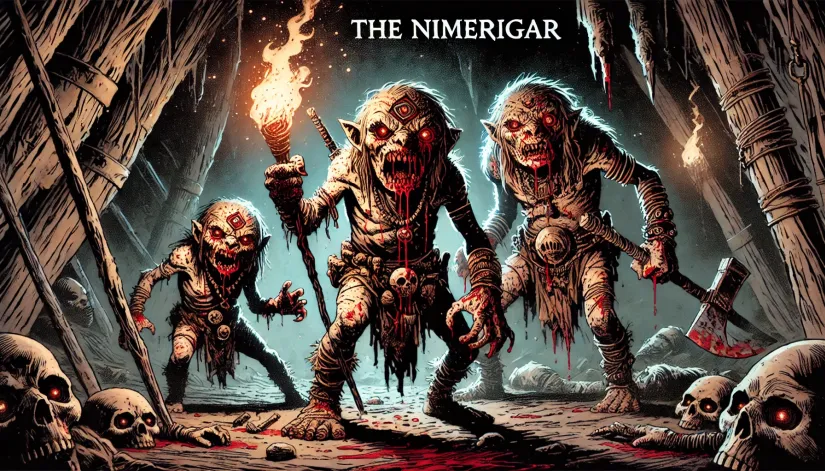
The Teihiihan and the Nimerigar
The Teihiihan (derived from the Arapaho word for “strong”) are described as powerful beings in the folklore of various tribes—including the Arapaho and Cheyenne.
These “Enemy Dwarves” are believed to inhabit the plains of Wyoming and Colorado, often terrorizing Native American tribes with their remarkable strength and ferocity. Far from the friendly gnomes of popular culture, these cryptids are known for their aggression and propensity for warfare.
But there’s another similar Native American cryptid that allegedly hides in the mountains of Wyoming. Here, the Shoshone and Paiute tribes speak of the Nimerigar (or “people eaters”).
These tiny, child-sized creatures are infamous for their belligerence and cannibalistic tendencies.
Legends describe them as ruthless, with an insatiable appetite for human flesh. They would even kill their own injured or sick with a blow to the head, a grim practice believed to be a form of euthanasia.
While the stories about these two Native American cryptids are often considered folklore, some intriguing evidence suggests they may have a basis in reality.
One of the most famous discoveries was the 1932 unearthing of the San Pedro Mountains Mummy in Wyoming. This mummified remains, about 14 inches tall, were initially thought to be a hoax.
However, the American Museum of Natural History and Harvard University’s Anthropology Department scientists who examined the remains confirmed the mummy as a full-grown adult, about 65 years old, who had suffered a violent death.
Other remains and stories, such as those documented by missionary David Zeisberger in 1778, add further credibility to the existence of these mysterious little people.
Zeisberger wrote about a burial ground near Coshocton, Ohio—that contained numerous graves of a pygmy race—suggesting these legends may have roots in actual historical events.
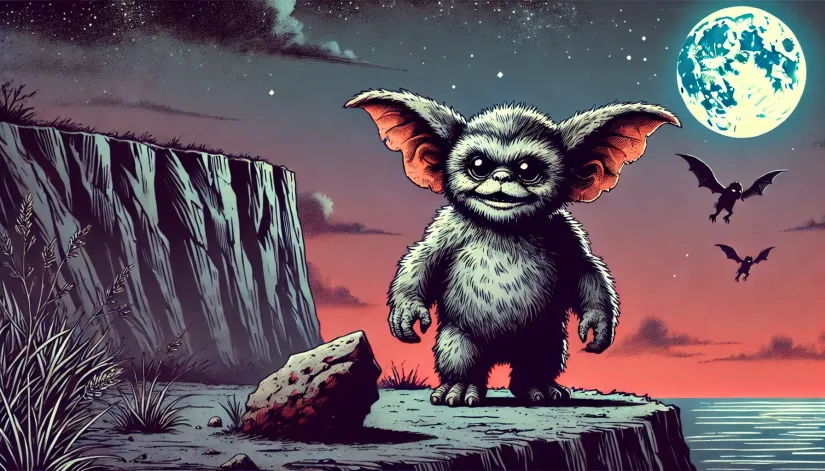
Pukwudgie: A Mischievous Native American Cryptid
When it comes to Native American cryptids, the Pukwudgie stands out as one of the most bizarre but also mischievous.
The first mentions of tiny humanoid beings known for their tricks and supernatural abilities come from the folklore of the Wampanoag and other tribes in the northeastern United States.
Standing no more than three feet tall, Pukwudgies have smooth gray skin, large ears, and human-like features. However, their fingers, noses, and ears are notably exaggerated.
Some legends even describe them as emitting a sweet, floral scent.
Recommended read:
- Is the Flatwoods Monster Real? An In-Depth Investigation of the 1952 Sighting
- Meet the Spirits: Are the Winchester Mystery House Ghosts Real?
- Top 14 Most Famous Werewolves in Mythology
According to stories, they were initially friendly towards humans. But their relationship soured over time.
What happened? The Pukwudgies grew jealous of the attention and reverence the tribe gave to Maushop, a benevolent giant who created the landmass of Cape Cod.
This jealousy led them to become pranksters, playing tricks on humans. However, these pranks often turned deadly.
One particularly strange tale speaks of how these tiny creatures allegedly push people off cliffs.
This legend is notably tied to the Freetown State Forest in Massachusetts, where numerous unexplained deaths have been attributed to these mischievous beings leading people off a towering cliff known as Assonet Ledge.
The area is not far from Hockomock Swamp, a location known for its paranormal activity.

Lake Iliamna Monster
Deep within the pristine waters of Lake Iliamna in Alaska, the legend of the Lake Iliamna Monster has captivated locals and researchers for decades.
This massive freshwater lake, spanning about 1,000 square miles and reaching depths of nearly 1,000 feet, is the perfect setting for such a mysterious creature to lurk.
Often referred to as “Illie,” the Yup’ik and Dena’ina tribes describe this Native American cryptid as a large aquatic creature resembling a serpent or sea monster, allegedly inhabiting the lake’s depths.
Modern interest in the Lake Iliamna Monster began in the 1940s with sightings by bush pilots—like Babe Alyesworth and Larry Rost—who claimed to have seen giant fish over 10 feet long while flying over the lake.
As you may expect, that sighting sparked a lot of interest. In 1980, the Anchorage Daily News even offered a $100,000 reward for tangible evidence of the monster.
Over the past few decades, scientists and cryptozoologists have used sonar technology and underwater cameras to search for conclusive proof of the creature’s existence.
However, despite these efforts, the lake’s remote and expansive nature has made it challenging to gather any definitive evidence. And the bounty remained unclaimed.
Speculation about the monster’s identity includes the possibility that it is a white sturgeon (which can grow to considerable sizes). However, these fish have never been documented in Alaska.
Other suggestions include Pacific sleeper sharks or even groups of freshwater seals known to inhabit Lake Iliamna.
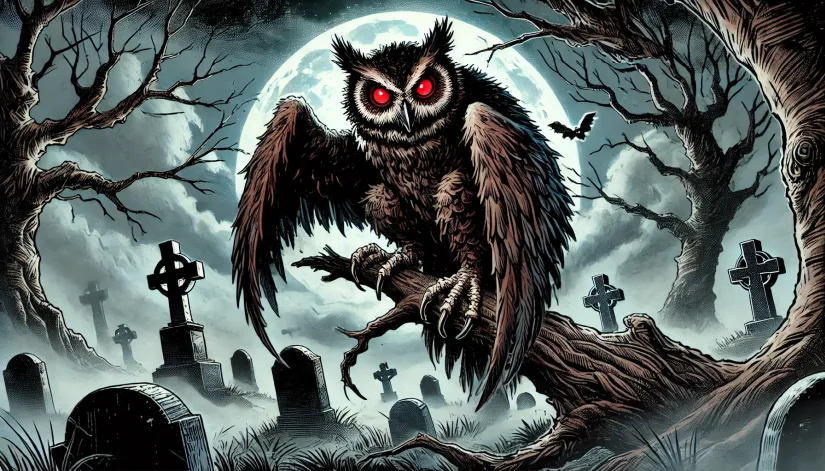
The Owlman
No, it’s not the same cryptid as the infamous Mothman. The Owlman (the “Night Owl”) is a mysterious Native American cryptid associated with spiritual symbolism and revered as a harbinger of wisdom and transformation.
Many Native American tribes view the Owlman as a messenger between realms, bridging the gap between the physical and spiritual worlds.
For example, the Hopi tribe sees the owl (more commonly known as Mongwu) as a stern lawman keeping order among the more mischievous spirits.
The Apache also has tales of an unusual creature called Big Owl, a malevolent giant often used in children’s stories to scare them into good behavior.
Depictions of the Owlman vary. However, they often portray a humanoid figure with owl-like features, able to glide silently through the night sky.
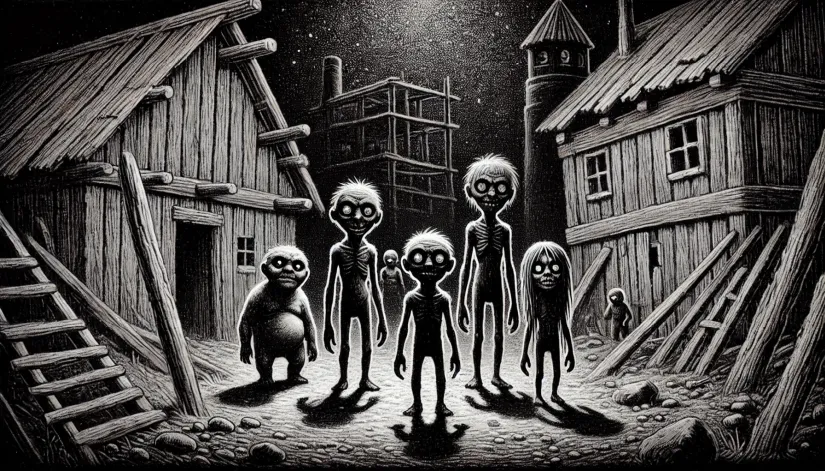
Little People: The Enigmatic Spirits of Native American Legends
In the stories and traditions of Native American tribes, there are these mystical spirits known as the Little People.
These spirits (sometimes called “Nimerigar” by the Shoshone or “Menehune” in Hawaiian folklore) are believed to be small in size but possess extraordinary spiritual abilities.
Different tribes have their own unique descriptions of these Native American cryptids. Still, they are generally seen as protectors of the land, possessing wisdom and magical powers.
The Little People are said to live in secluded areas such as caves, forests, or remote mountains.
Legends depict them as both mischievous and kind spirits. They often help those who show respect for nature and kindness. They also teach valuable lessons through riddles and tests.
Encounters with the Little People are extremely rare, and those who claim to have encountered them describe an otherworldly presence characterized by fleeting glimpses or faint laughter echoing through the wilderness.
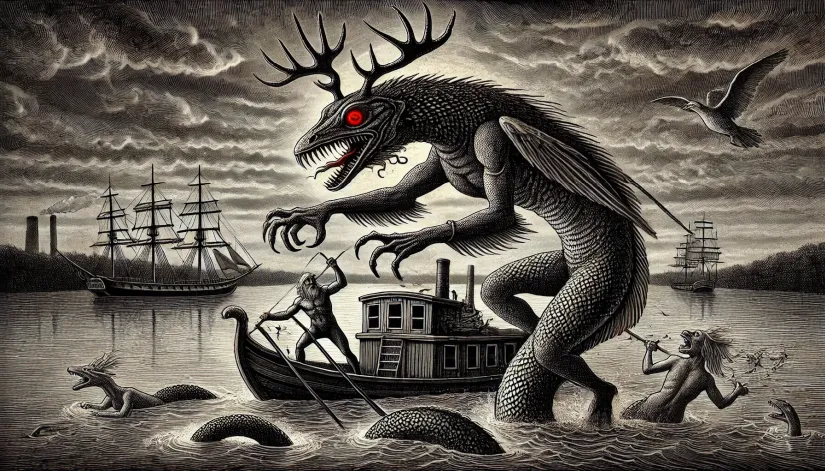
Piasa Bird: The Creature of the Mississippi River
Have you ever heard of the Piasa Bird? Unlike the Thunderbird, the Piasa Bird is often depicted as a magnificent flying dragon.
Back in 1673, French explorer Father Jacques Marquette chronicled his alleged encounter with the Piasa Bird during his travels with Louis Jolliet.
Marquette’s journal entry described this creature as the size of a calf, with deer-like antlers, blood-red eyes, and a face somewhat human-like yet terrifyingly strange.
Imagine a body covered in scales and a long, snake-like tail—sounds like something out of a nightmare, right?
According to local lore, this Native American cryptid terrorized tribes living in the Mississippi River Valley. But interestingly enough, the original mural Marquette saw was located on the limestone bluffs near what is now Alton, Illinois.
Sadly, the image was destroyed in the 1850s due to quarrying activities. Still, it has since been repainted to preserve the legend.
So, what do you think? Could the Piasa Bird be a blend of various myths, or was there something real behind those ancient tales? Either way, the Piasa Bird remains one of the Mississippi River’s most fascinating and enduring legends.
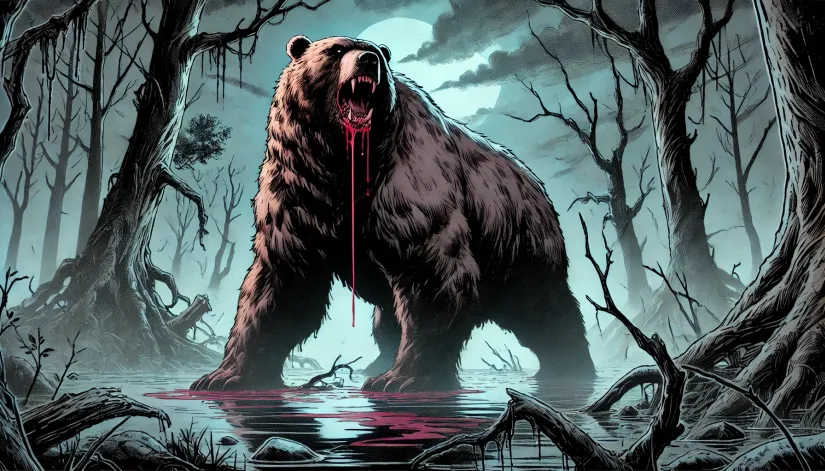
Katshituashku, the Man-Eating Bear
The Penobscot Indians of the East Coast have some fascinating stories about a fearsome creature called the Katshituashku (or Stiff-Legged Bear).
This Native American cryptid was described as an enormous, man-eating bear with a gigantic head and rigid, unbending legs. According to their folklore, the Katshituashku stalked, hunted, and consumed humans.
Interestingly, some anthropologists have noted that descriptions of the Katshituashku bear a striking resemblance to African elephants, a species the Native Americans wouldn’t have encountered.
This observation has led to a captivating theory: perhaps the Penobscot people stumbled upon the skeletal remains of prehistoric mastodons. And, without the knowledge to identify these bones accurately, they incorporated these findings into their legends.
However, the legend of the Stiff-Legged Bear isn’t unique to the Penobscot. Similar stories are told among other tribes in North America.
For instance, the Iroquois have tales of the Naked Bear—a giant, hairless bear that preyed on humans.
The Lenape and Shawnee tribes also recount legends of the Yakwawiak, massive, stiff-legged, hairless bears comparable to mammoths or mastodons.

